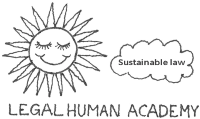Accelerated learning as well as blended learning is meant to support educators in a shift from the role of delivering to a new role of becoming facilitators. This will activate students, as it is confirmed that the most efficient way to improve learning is to choose technologies and learning formats that will change the activity of the majority of the students. Focus on blended learning has been chosen to make learning efficient and fruitful. The idea is to replace learning that mostly involve information transfer by ICT and to make repetitive effects by technology in order to create better in-person learning experiences for students when technology is used to free up time.
The main idea is to use both the conscious and the unconscious functions of the personality to achieve learning. On the conscious level, direct impressions are usually verbalised. On the unconscious level, the student peripherally on a marginal level of perception receives impressions. The communication is usually non-verbal and includes pictures, intonations, body expressions and behaviours.
Comparison of traditional and accelerated learning methods.
| Assumptions of traditional paradigms of education | Assumptions of the paradigms of accelerated learning |
| Information must be given in small pieces, presented logically | Large amounts of information are presented globally |
| Limited expectations of students | Realization that students can learn 3-5 times faster than before |
| Emphasis on analytical, left-brain thinking | Whole-brain thinking |
| Concerned with norms | Concerned with the individual’s performance, stressing unlimited potential |
| Classroom designed for efficiency, convenience | Emphasis on aesthetics, comfort, and beauty |
